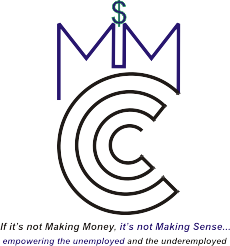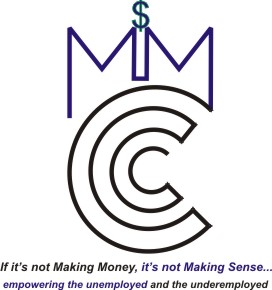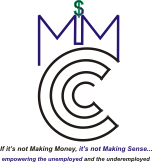Claim Your Compensation: Unraveling Accident Compensation Claims
An accident, apart from causing physical and emotional distress, can lead to significant financial burdens. However, the law provides that you may be entitled to accident compensation. This comprehensive guide will demystify the concept of accident compensation, explain the claims process, and reveal important determinants of the compensation amount.
What you need to understand by Accident Compensation
In legal terms, accident compensation refers to the financial reimbursement awarded to a victim who suffers injuries due to another party’s negligence. It serves to restore the victim’s financial status to its pre-accident condition.
Classification of Accident Compensation
Different categories of accident compensation exist based on the circumstances surrounding the accident. Common types include workplace accident claims, road traffic accident claims, and public liability claims, such as slips, trips, and falls.
Workplace Accident Claims
Workplace accidents are unfortunately common and can occur in any industry, from construction sites to office spaces. If you have been injured at work due to inadequate safety measures, faulty equipment, or negligence on the part of your employer, you may be entitled to workplace accident compensation. This category covers accidents such as falls from height, slips and trips, machinery accidents, and even work-related illnesses or conditions, such as repetitive strain injury or industrial deafness.
Road Traffic Accident Claims
Road traffic accidents involve motor vehicles and can range from car and motorcycle accidents to incidents involving bicycles or pedestrians. If you have been injured in a road accident that was not your fault, you can make a claim against the negligent driver. It’s important to note that this applies even if the driver is uninsured or flees the scene (hit and run).
Public Liability Claims
Public liability claims involve accidents that occur in public places or on someone else’s property. This could be anything from tripping over uneven pavement to suffering an injury in a shop, restaurant, or even someone’s house. The entity responsible for maintaining the premises (like a local council or business owner) could be held liable if their negligence led to your accident.
Medical Negligence Claims
If you have suffered due to medical negligence, you might be entitled to make a compensation claim. This can range from misdiagnosis and incorrect treatment, to surgical errors and negligence during childbirth. The claim in this instance would be against the medical professional or hospital that failed in their duty of care towards you.
Detailed Procedure for Compensation Claims
Incident Reportage
The journey to claiming compensation begins with reporting the accident to the relevant authorities promptly. Notably, accident reports form a critical part of the evidence needed to substantiate your claim.
Evidence Accumulation
Supporting evidence, including photographs, video footage, witness testimonies, and medical reports, strengthens your claim. Think of it as putting together a jigsaw puzzle; each piece brings you closer to seeing the full picture, or in this case, proving your claim.
Legal Counsel Selection
Choosing a seasoned solicitor is an integral step in the claims process. They will navigate the legal intricacies and advocate for your right to fair compensation.
Lodging the Claim
After consolidating your evidence and securing a solicitor, the claim can be officially filed. The solicitor drafts and submits the necessary paperwork to the appropriate court.
The Determinants of Your Compensation Amount
Nature and Severity of Sustained Injuries
The nature and severity of your injuries directly influence the compensation amount. More severe or long-term injuries typically result in higher compensation.
Assessment of Earnings Loss
If your injuries have led to a loss of earnings, this will be factored into your claim. The law acknowledges that accident victims should not suffer additional financial hardship due to lost income.
Account of Expenses
You can claim any out-of-pocket expenses directly linked to the accident such as medical bills, rehabilitation costs, and transportation expenses. After all, why should you foot the bill for an accident you didn’t cause?
Vital Points to Remember During the Claim Process
During your claim journey, remember that no two cases are identical. The process may involve twists and turns. Ensure that you maintain clear communication with your solicitor, honor all medical appointments, and document all related expenses.
Conclusion
While the process of claiming accident compensation may seem formidable, with the right guidance and a skilled solicitor, you can traverse it successfully. Remember, the goal of accident compensation is to bring your life back to normalcy following an accident. Don’t shy away from claiming what’s rightfully yours.
FAQs
What is the statutory timeframe for filing an accident compensation claim? Typically, personal injury claims must be initiated within three years from the accident date. However, certain exceptions may apply, and thus seeking immediate legal advice is recommended.
Is hiring a solicitor necessary for making a compensation claim? Although not a legal requirement, employing a solicitor can significantly enhance your chances of successful claim resolution. They can guide you through the intricate legal landscape and work to maximize your compensation.
Which types of accidents are eligible for compensation claims? Any accident caused by another party’s negligence can lead to a compensation claim. This includes, but is not limited to, road traffic accidents, workplace accidents, and public liability accidents like slips, trips, and falls.
What evidence should I gather to bolster my claim? Robust evidence such as photographs, videos, eyewitness statements, and medical reports can greatly substantiate your claim.
How is my compensation sum determined? The calculation of compensation considers various factors, including the nature of your injuries, loss of earnings, and any out-of-pocket expenses you’ve incurred as a result of the accident.













